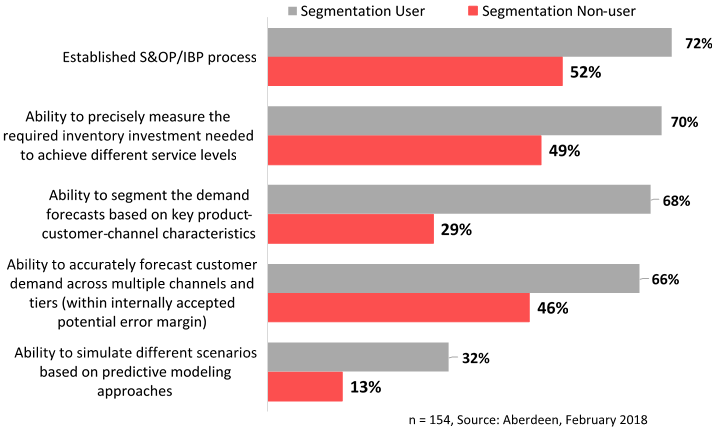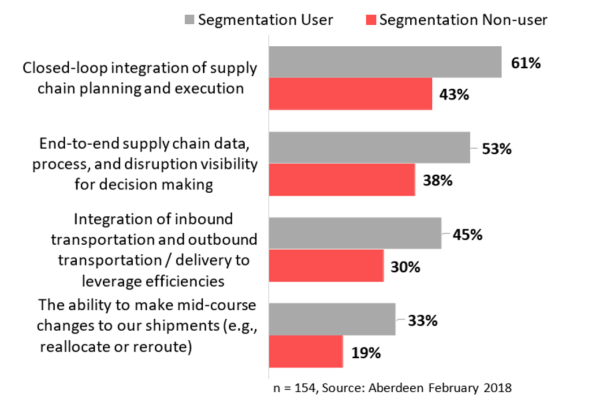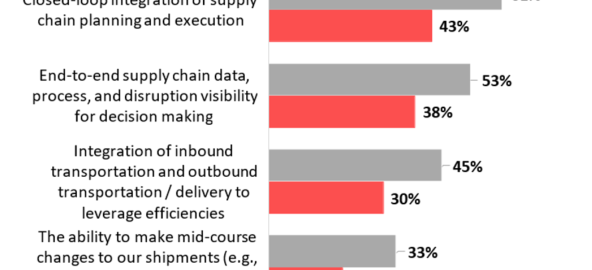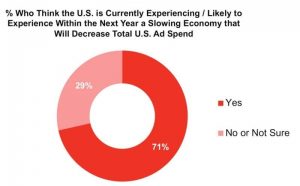— April 15, 2018

The impact eCommerce has had on sales and operations planning (S&OP) is monumental. Customers are more empowered now than ever, and they expect their products to be delivered whenever, however, and wherever they want.
The result of these heightened expectations is direct-to-customer shipments from all levels in the supply chain – including retail stores, retail distribution centers (DCs), manufacturers’ DCs, distributor DCs, and even direct from manufacturing plants.
Staying afloat throughout these channel and demand shifts requires a few things: Diligence, agility, and perhaps most importantly, demand segmentation capabilities that enable consistent and methodical management of demand volatility.
Don’t let demand volatility take a toll on your service levels. Instead, ensure agile responses and seamless service by facing your business pressures head-on. Doing so requires defining where your demand is coming from and determining if your organization is equipped with the right tools for the job (and if it’s not, rectifying the gap).
Recent Aberdeen research shows that the key to nimbly satisfying market shifts and customer demands is demand segmentation capabilities, which enable you to understand the shifts and continuously adjust in order to remain competitive and prosperous.
Performance improvements enabled by segmentation capabilities
Dividing the data by respondents who use demand segmentation capabilities (Users) and those who do not (Non-users), Aberdeen’s findings show that segmentation Users have advantages over Non-users across key performance metrics in planning and execution.
Segmentation Users report performance advantages such as:
- 32% higher average customer service levels (83% for Users vs. 63% for Non-users),
- Cash conversion cycles of 46 days (vs. 54 days for Non-users), and
- 66% better average forecast accuracy at the SKU level (53% for Users vs. 32% for Non-users).
Planning improvements enabled by segmentation capabilities
Segmentation Users also enjoy advantages in their planning processes across the whole organization.
Improved forecast accuracy affects organizational planning because it magnifies the impact of inventory optimization efforts, enabling segmentation Users to be 44% more likely than Non-users to define the correct inventory levels. It should come as no surprise that Users report 11% higher finished goods inventory turns vs. Non-Users (59 turns vs. 53 turns).
Since S&OP processes often spur the initiative to better understand demand volatility, it is natural that segmentation Users are 37% more likely than Non-users to have an established S&OP and integrated business planning (IBP) process in place (Figure 1).
Figure 1: Across Organization Planning

Segmentation capabilities improve execution across the board
Execution across the organization stands to benefit from segmentation capabilities, as well.
Better end-to-end supply chain data, process, and disruption visibility for decision making is another cross-organization benefit that segmentation Users enjoy (Figure 2). Visibility across all of an organization’s solution components provides access to the inventory and timing data, which informs allocation and commitment decisions.
Making decisions without that insight means decisions are based off of historical averages and channel demands, and that can be dangerous – unless, of course, demands have not shifted and markets have remained exactly the same. You should know, however, that Aberdeen research has found that demand volatility is a top business pressure and a regular cause for supply chain disruptions.
Segmentation not only enables an organization to improve the integration of inbound and outbound transportation (Users’ 45% vs. Non-Users’ 30%), but allows them to be 50% more likely to centrally manage inbound and outbound shipments (Figure 2). The ability to centrally manage shipments has a favorable impact on costs and visibility. To that point, note the 72% greater likelihood of Users to make mid-course corrections than Non-users; this is possible because segmentation provides a more granular view of demand.
Figure 2: Across Organization Execution

Business & Finance Articles on Business 2 Community
(92)
Report Post






